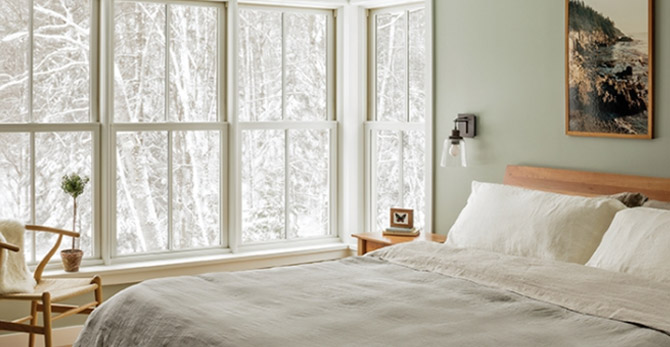
HOW TO WINTERIZE THE WINDOWS AND DOORS
IN YOUR NEW HOME
So you’ve bought a new home. Congratulations. Once the dust settles and you finally start to settle in, you come to the realization that you’ve just inherited a laundry list of new responsibilities.
When the deep freeze starts to set in, the last thing you want to worry about is losing valuable heat due to drafty windows and doors. In addition to the cost associated with a heating system that has to work overtime, there’s the comfort factor and with more time spent at home in general, there’s something to be said for keeping things cozy–for both sound mind and body.
UNDERSTANDING THE VALUE OF WINTERIZING
The process of winterizing your windows and doors seems simple enough–if they leak, they let cold air in and allow heat to escape. While that’s true, it’s important to understand how serious an impact this can have on how well your home actually retains heat. It might be tempting to ignore the issue and just raise the thermostat up a bit to compensate, but what you may not realize is by doing this you’re contributing to a problem that will continue to grow–in the form of a much higher utility bill. According to the Department of Energy, drafty windows are responsible for 25% – 30% of residential heating energy use. That’s hard-earned money that could be saved for a rainy day or spent elsewhere.

BASIC TIPS TO INSULATE YOUR WINDOWS AND DOORS
Most often, the culprit behind a drafty window or door isn’t the product itself. Over time, when homes settle, what was once a tight seal between windows, doors and the surrounding framing and structure has become compromised.
For windows, insulating film is probably the cheapest method to add some insulation. It comes in rolls, along with adhesive that you use to apply directly to the surface. However, this does not address any leaks around the window frame itself.
For windows and doors, weatherstripping is another easy to apply and affordable solution. Essentially, the weatherstripping is applied to areas where the actual window or door meet the fixed framing that holds them in place. Once they’re in the closed position, the weatherstripping helps to cut down on the air flow.
Another option is to apply a bead of caulk to both the interior and exterior of the window or door frame. Depending on how handy you are, this could also be a great DIY project for you to tackle. Just be sure to practice your technique first, since it will be visible and could turn out looking poor if not done precisely. Also, it’s important to use the right type of caulk for interior applications and exterior applications respectively, the latter being the most different in that it must withstand the outside elements more effectively.
Sealing gaps has the added benefit of keeping moisture out which can actually deteriorate the window or door and possibly create an environment where mold can form.
If you have a bit of a budget, you could even consider storm windows and doors. These products are installed over your existing windows and doors. While there are stock options available to choose from, it may be a case where you have to custom order to fit the size properly. Whether you hire a pro or decide to do this yourself is all based on your own skills.

HOW DO I KNOW IF I SHOULD REPLACE MY WINDOWS AND DOORS INSTEAD?
Whether you’re a first time home buyer or you’ve owned your home for years, a common misconception is that you have to wait for the weather to warm up to jump into a replacement window or door project. Fortunately, that’s just not the case. With some added measures by the installation team to keep your house warm during the project, this is totally doable. Since each window (or door, if you have more than one), is removed and replaced one at a time, it’s not as if all the openings will be breached at the same time which isolates the heat loss during the process. Plus, the savings on your energy bills will be almost immediate and it’s one less day of unnecessary wear and tear on your heating system.











